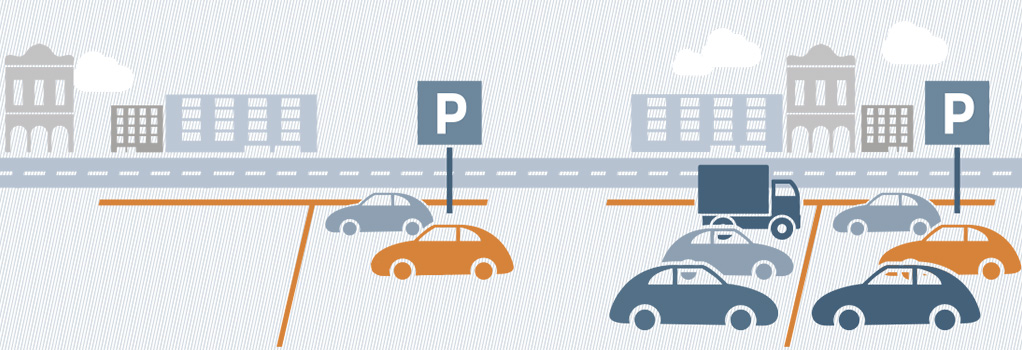
Development

Development
Close-distance Scenarios
Levels of automation* & functions
AdaptIVe will address a number of low-speed scenarios with speeds up to 30 km/h. These scenarios, such as parking and manoeuvring in crowded environments, are characterized by the presence of close obstacles.
Partial automation
Parking assistance
Parking a vehicle in a crowded or inconvenient location, such as small parking slots, can be partially automated with the driver in control via a customised remote control (RC). The driver is responsible for the movement of the vehicle by constantly pressing a dedicated button on the RC.
This function parks the vehicle in a suitable location with the driver outside the vehicle. The driver stops the vehicle close to the intended parking lot and exits the vehicle. The driver starts the vehicle with the RC and the vehicle drives to the location. This function increases the number of possible parking locations and reduces the possibility of collision with parked vehicles.
Conditional automation
Garage parking
This function parks the vehicle in a garage location without a driver inside the vehicle. The driver stops the vehicle close to the intended garage, e.g. at home, and exits the vehicle. The driver starts the vehicle with the RC and the vehicle drives to the location. The garage can have more complex geometry, such as the asymmetric positioning of the vehicle for parking in a two-car garage.
Parking in special areas
This function parks the car in a spot which is perpendicular to the street and that would be too narrow for a driver to exit the car after it was parked.
The function targets the more efficient use of space in parking garages. Since the driver can exit the car in front of the parking spot, the function allows cars to be parked closer to each other. Although cars are being parked closer to each other, the reliable sensing technology will decrease the number of collisions while parking as compared to a human driver.
Parking in a multi-level garage
This function drives the car from the entrance of the parking garage to a dedicated parking area and parks the car in the allocated parking space. The function allows for more efficient management of parking spaces and reduces the time and energy needed to find vacant parking spots. The map for the parking operation is either preloaded or can be provided by the garage via cooperative services.
Stop & go
Vehicles will follow the traffic regardless of free flow or stop and go traffic.
High automation
Safe stop
If the driver does not react to a take-over request, the system slows down and safely stops the vehicle.

Challenges
- Close-distance manoeuvring requires sensors and algorithms that are not currently available. Sensor sensitivity will be based on the traffic situation, allowing the vehicle to reliably detect other objects and free space over close distances and to navigate in this area by selectively giving priority to one direction over the other.
- A fail-safe and robust perception platform is envisaged, taking into account the latest advances in embedded systems and communication and information technologies. This platform will support the decision-making process in complicated situations.
- Fully automated parking requires a learning car, where the car can train itself by learning the typical environment. The car shall then be able to drive and to manoeuvre within a similar environment.
- Another challenge is the incorrect assumption of a less risky environment as suggested by the words low speed. The mass and energy of a vehicle must be under control in all conditions.
* Classification scheme based on terms related to automated driving according to SAE and VDA. See SAE document J3016, “Taxonomy and Definitions for Terms Related to On-Road Automated Motor Vehicles”, issued 2014-01-16, see also http://standards.sae.org/j3016_201401 (→ external link) and the position paper from the VDA “Automated Driving” working group.

